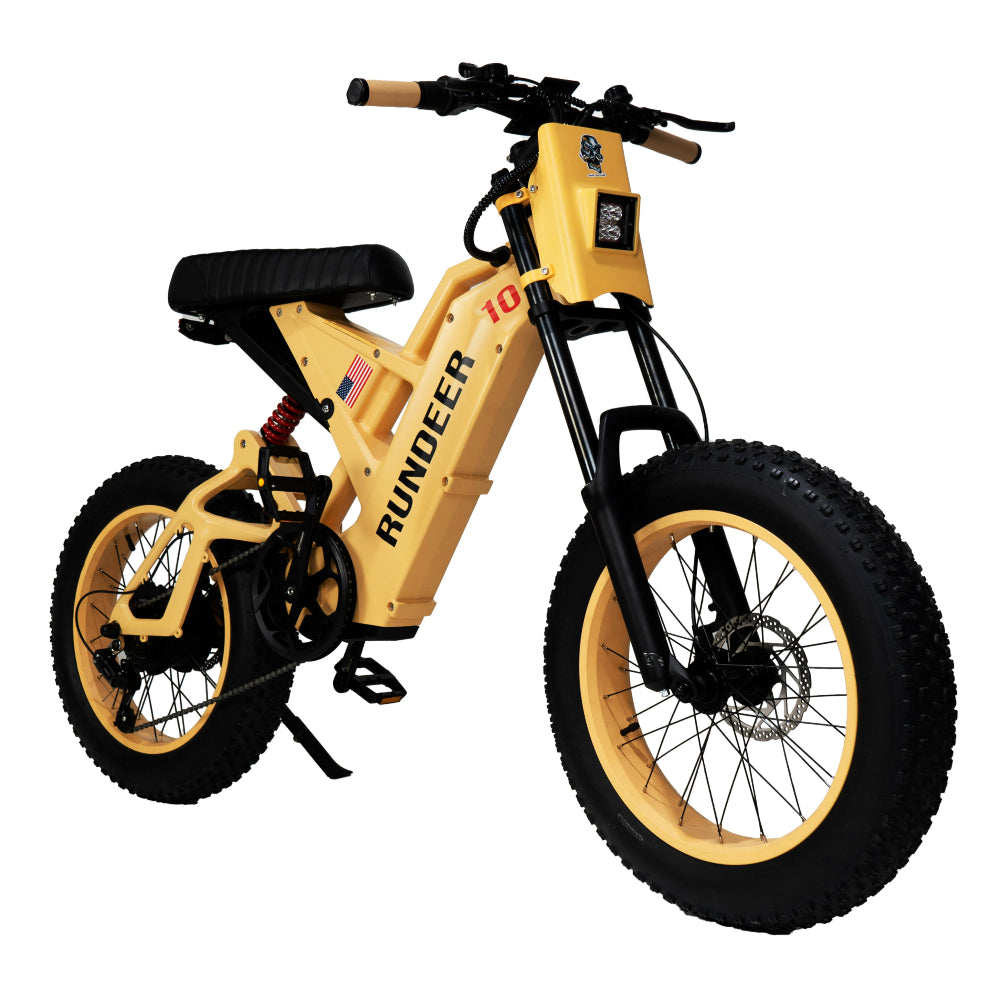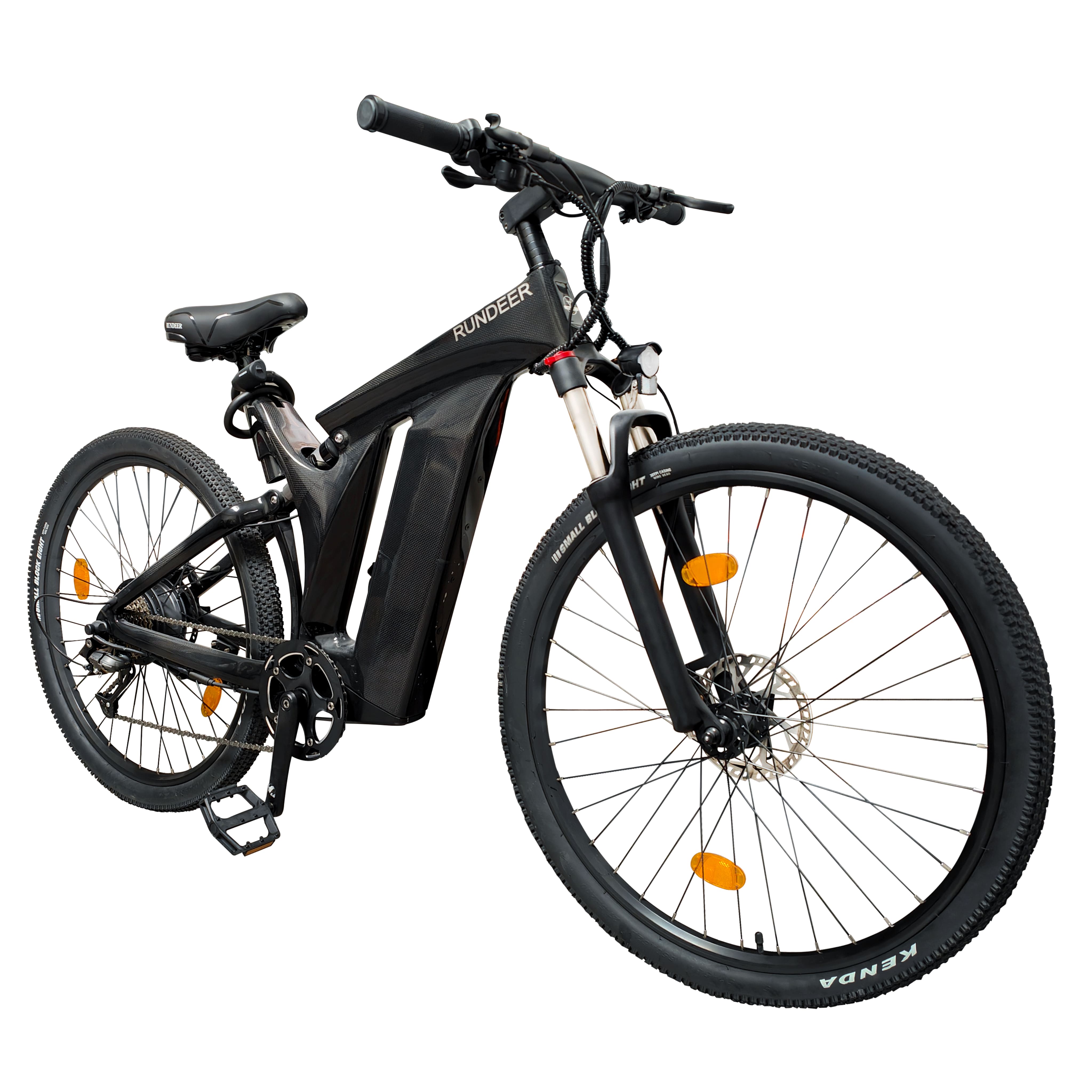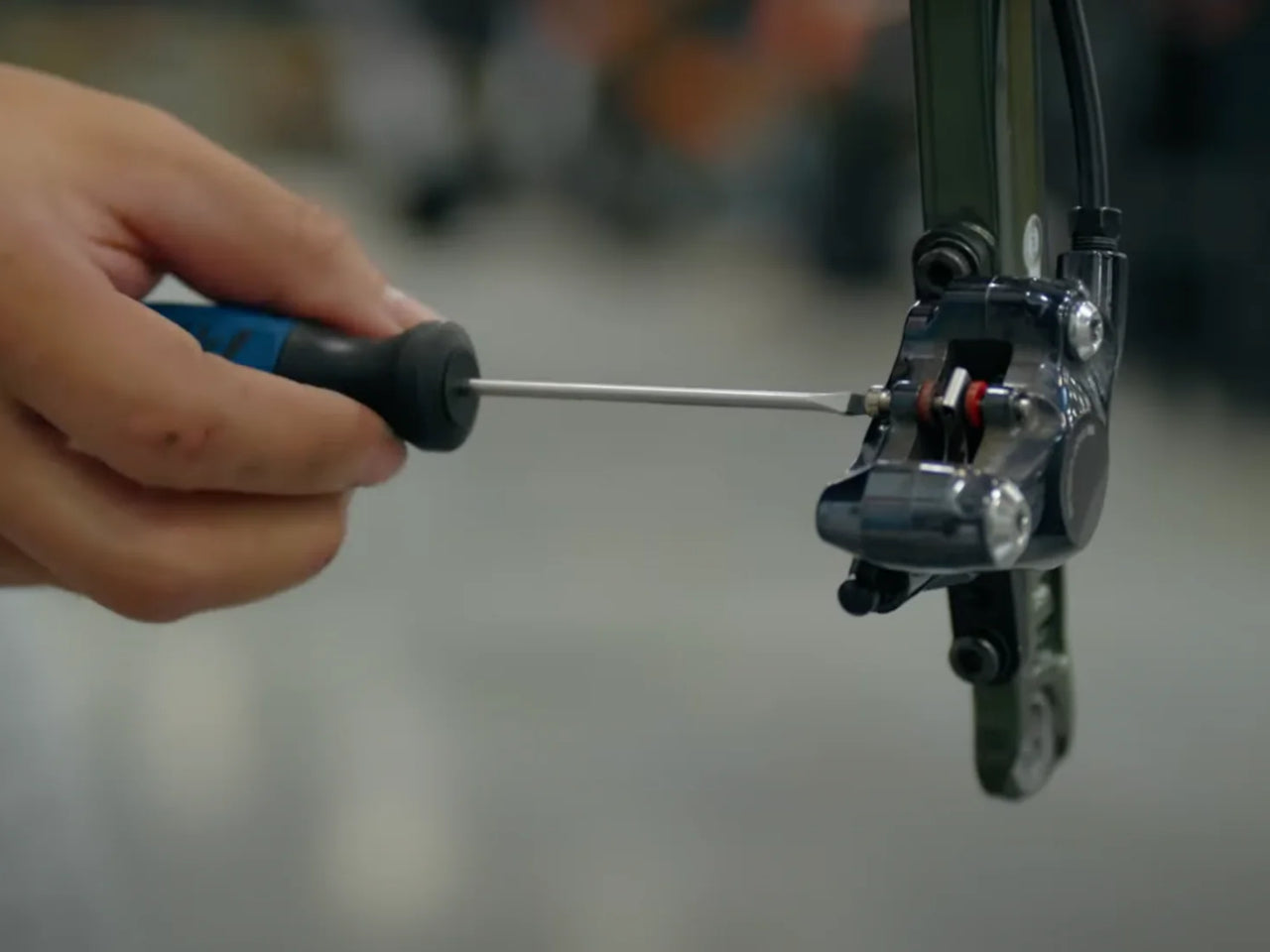When gliding on an e-bike that can travel 20-28 mph effortlessly, a reliable braking system is an issue of sheer safety. Motor and battery weight makes it more difficult to bring an e-bike to a stop than it does for regular cycles. Hydraulic disc vs. mechanical disc brake systems are not merely issues of personal choice—knowing both systems guarantees you stop where you want to.
Comparison of Mechanical Disc Brake and Hydraulic Disc Brake at a Glance
| Feature | Mechanical Disc Brakes | Hydraulic Disc Brakes |
| Stopping Power | Moderate | Superior |
| Modulation | Basic | Precise |
| Hand Effort Required | Higher | Lower |
| Initial Cost | $30-150 | $100-400+ |
| Self-Adjustment | No | Yes |
| Maintenance Complexity | Simple | Complex |
| Tools Required | Basic | Specialized |
| Maintenance Frequency | More frequent | Less frequent |
| Weather Resistance | Good | Excellent |
| Weight | Slightly heavier | Slightly lighter |
| Ideal For | Budget e-bikes, casual riders, DIY mechanics | Performance e-bikes, frequent riders, technical terrain |
The Fundamentals of Disc Brake Technology
Disc brakes, unlike rim brakes, employ a rotor on the wheel hub and calipers on the fork/frame. Compressing pads onto the rotor by pulling the lever generates friction to slow the wheel. Disc brakes benefit e-bikes because they provide improved wet weather performance, reduced rim wear, more reliable braking independent of wheel flaws, and enhanced heat dissipation.
Mechanical Disc Brakes: They use a cable-pull mechanism. Lever force pulls a cable, which in turn actuates a caliper of one piston that forces one pad against the rotor while the other is held stationary. Simplicity allows easy adjustment and diagnosis, and they offer old-timers who are new to e-bikes with familiarity. Components include levers, cables/housing, a one-piston caliper, pads, a rotor, and cable adjusters.
Hydraulic Disc Brakes: These incorporate sealed hydraulic fluid-filled hoses instead of cables. Force applied at the lever powers a master cylinder, transferring force to a dual-piston caliper, which pushes the pads in. The closed system is more powerful with less effort and self-adjusting pad wear, reducing maintenance. Parts include levers with master cylinders, hydraulic hoses, dual-piston calipers, pads, a rotor, and hydraulic fluid.
Mechanical Disc Brakes: Pros and Cons for E-Bike Riders
Understanding the advantages and disadvantages of mechanical disc brakes can determine if they are suitable for your e-bike riding style and maintenance routine.
Advantages of Mechanical Disc Brakes
Affordability and Accessibility: Mechanical disc brakes are cheaper than hydraulic disc brakes and are attractive to budget-belted e-bike buyers. The cost difference is really significant, especially when it comes to entire kits for the two wheels.
User-Friendly Maintenance: The exposed cable system makes basic maintenance easy with simple tools. It is simple to adjust cable tension to offset pad wear, and cable replacement demands little special knowledge.
Field Repairability: If a mechanical brake system fails during riding, temporary repairs can typically be made with few tools. This reliability in the backcountry gives confidence to adventurous e-bike riders.
Fully Compliant with Available Brake Levers: Most less-complex cockpit-design e-bikes can utilize mechanical disc brakes utilizing standard brake levers, rendering upgrades or substitutions simpler.
Disadvantages of Mechanical Disc Brakes
Less Stopping Power: The single-piston system and cable-transfer force tend to offer less total stopping power—a considerable factor for heavier e-bikes or riders that find themselves on steep downhills with regularity.
Greater Hand Fatigue: Mechanical designs typically require a greater level of hand power to release maximum braking energy, resulting in fatigue on long rides or steep descents on your e-bike.
Regular Adjustment Needs: Cable stretch and pad wear need to be regularly adjusted in order to provide optimal braking efficiency. If not adjusted, your e-bike's stopping distance will lengthen with time.
Risk of Cable Contamination: Exposed cables can collect water or dirt, which leads to friction and a loss of braking performance—particularly an issue for e-bikes used in wet conditions.
Hydraulic Disc Brakes: Pros and Cons for E-Bike Riders
The advanced design of hydraulic disc brakes offers distinct performance benefits but comes with its own set of considerations for e-bike owners.
Advantages of Hydraulic Disc Brakes
Superior Stopping Power The hydraulic mechanism provides significantly greater braking force with less hand effort—crucial for controlling heavier e-bikes during emergency stops or steep descents.
Precise Modulation The fluid-based system offers finer control over braking intensity, allowing e-bike riders to apply exactly the right amount of stopping power without locking up the wheels.
Self-Adjusting Capability As brake pads wear down, the hydraulic system automatically adjusts to maintain consistent lever feel and performance—a valuable feature for maintaining safety on longer e-bike journeys.
Reduced Maintenance Frequency While hydraulic systems require specialized service, they need attention less frequently than mechanical brakes, with some systems performing reliably for years between major servicing.
Better Ergonomics The lighter lever action reduces hand fatigue during extended rides, enhancing comfort and control for e-bike commuters and recreational cyclists alike.
Disadvantages of Hydraulic Disc Brakes
Higher Initial Cost Hydraulic systems typically command a premium price, adding to the already substantial investment of a quality e-bike.
Complex Maintenance Procedures When hydraulic brakes do require service, the procedures—particularly system bleeding—demand specialized tools and technical knowledge that may be beyond the comfort level of many home mechanics.
Vulnerability to Extreme Conditions Some hydraulic fluids can be affected by very high or low temperatures, potentially compromising performance in extreme weather conditions—though this rarely affects typical e-bike usage.
Stopping Power Showdown: The Performance Difference
When directly comparing braking performance, hydraulic systems consistently demonstrate superior stopping power—a difference that becomes more pronounced in demanding conditions, offering e-bike riders a tangible advantage in safety and control. This isn't merely about raw power; it's a holistic enhancement encompassing responsiveness and reliability across diverse scenarios. The inherent design of hydraulic systems, utilizing incompressible fluid within a sealed line, allows for a more direct and efficient transfer of force from the lever to the caliper, translating to quicker and more forceful engagement of the brake pads. This immediate response provides riders with a heightened sense of connection to their braking system, fostering greater confidence and precision.
Braking Force and Modulation: A Quantitative Edge
Hydraulic disc brakes typically generate a significant 20-30% more stopping power than comparable mechanical systems. This increased force isn't just a number; it's a crucial factor in critical situations. Moreover, this power comes with notably improved modulation—the nuanced ability to apply braking force progressively rather than in an abrupt, all-or-nothing fashion. This finer control allows riders to feather the brakes for subtle speed adjustments on technical trails or apply maximum force smoothly and predictably in emergency stops, preventing wheel lock-up and maintaining stability.
For e-bike riders, who often navigate varied terrain and higher speeds, this translates directly into:
- Shorter stopping distances in emergency situations: The immediate and powerful response of hydraulics can be the difference between a close call and a safe stop.
- More confident control on steep descents: The superior modulation allows for controlled speed management without the arm pump and fatigue often associated with less powerful mechanical systems.
- Less physical exertion during technical riding: The increased leverage and efficiency of hydraulics mean riders can achieve the desired braking force with less hand strength, leading to reduced fatigue on long or challenging rides.
Performance in Challenging Conditions: Weathering the Elements
Hydraulic and mechanical systems' performance gap increases even wider when Mother Nature throws a curveball. In tough wet-weather testing, hydraulic systems surprisingly maintain roughly 80-90% of their on-dry performance, delivering consistent reliability regardless of the weather. In stark contrast, mechanical brakes with cables exposed and relying on direct mechanical action lose a great portion of their efficiency when wet, down sometimes as low as 60-70% of their dry stopping ability. These losses in performance can compromise rider safety and assurance when riding on slippery ground.
Also, the sealed nature of hydraulic systems is critical protection against contamination by the inevitable onslaught of water, mud, and dust—elements frequently encountered during exhilarating e-bike rides on rough terrain. This sealed configuration will not permit dirt into the braking system, providing consistent and reliable performance ride after ride, compared to mechanical systems in which contaminants will create drag, squealing, and reduced braking power. This ruggedness in adverse conditions solidifies hydraulic brakes as the superior choice for e-bike riders who demand consistent and reliable performance no matter the trail or weather.
Make the Right Brake Choice for Your Ride
When deciding whether to go with hydraulic or mechanical disc brakes for your e-bike, consider your riding style, comfort level with maintenance, and budget. Hydraulic systems deliver more powerful stopping and more precise modulation, but mechanical brakes provide accessibility and simplicity. Either choice is a significant safety upgrade from rim brakes, making your e-bike rides both exciting and safe.












